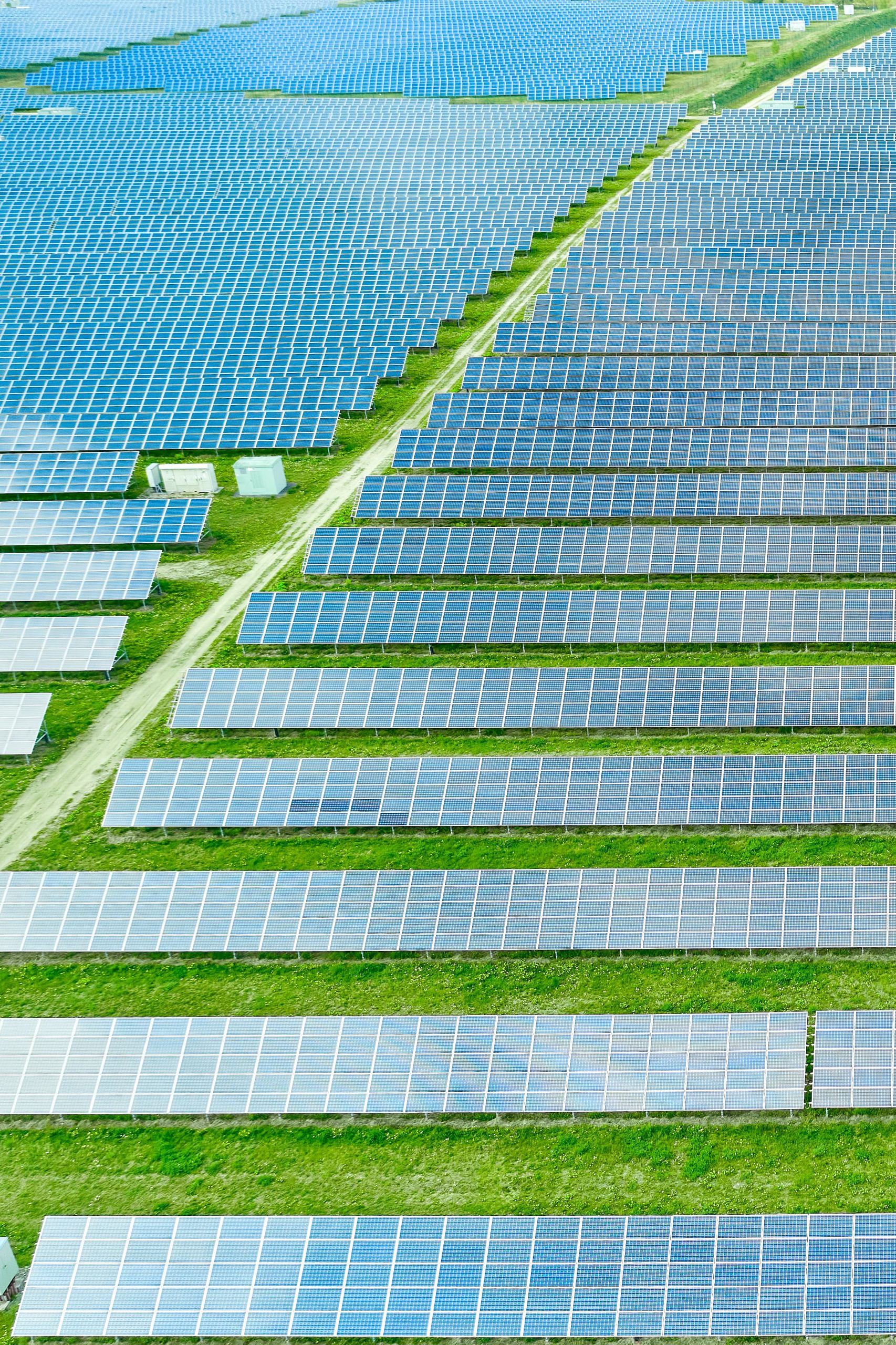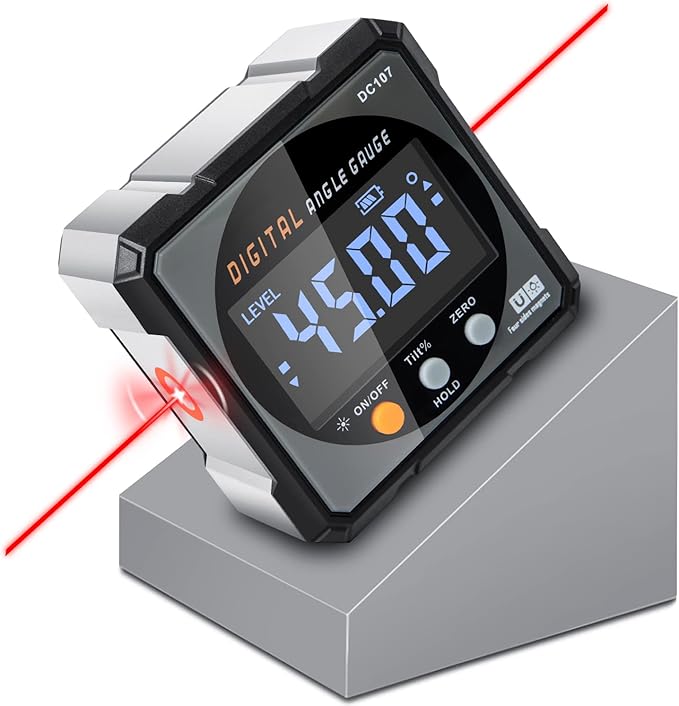Unterschiede zwischen Tonerde-Sandstrahlen und Keramikperlen-Strahlen
August 27, 2024
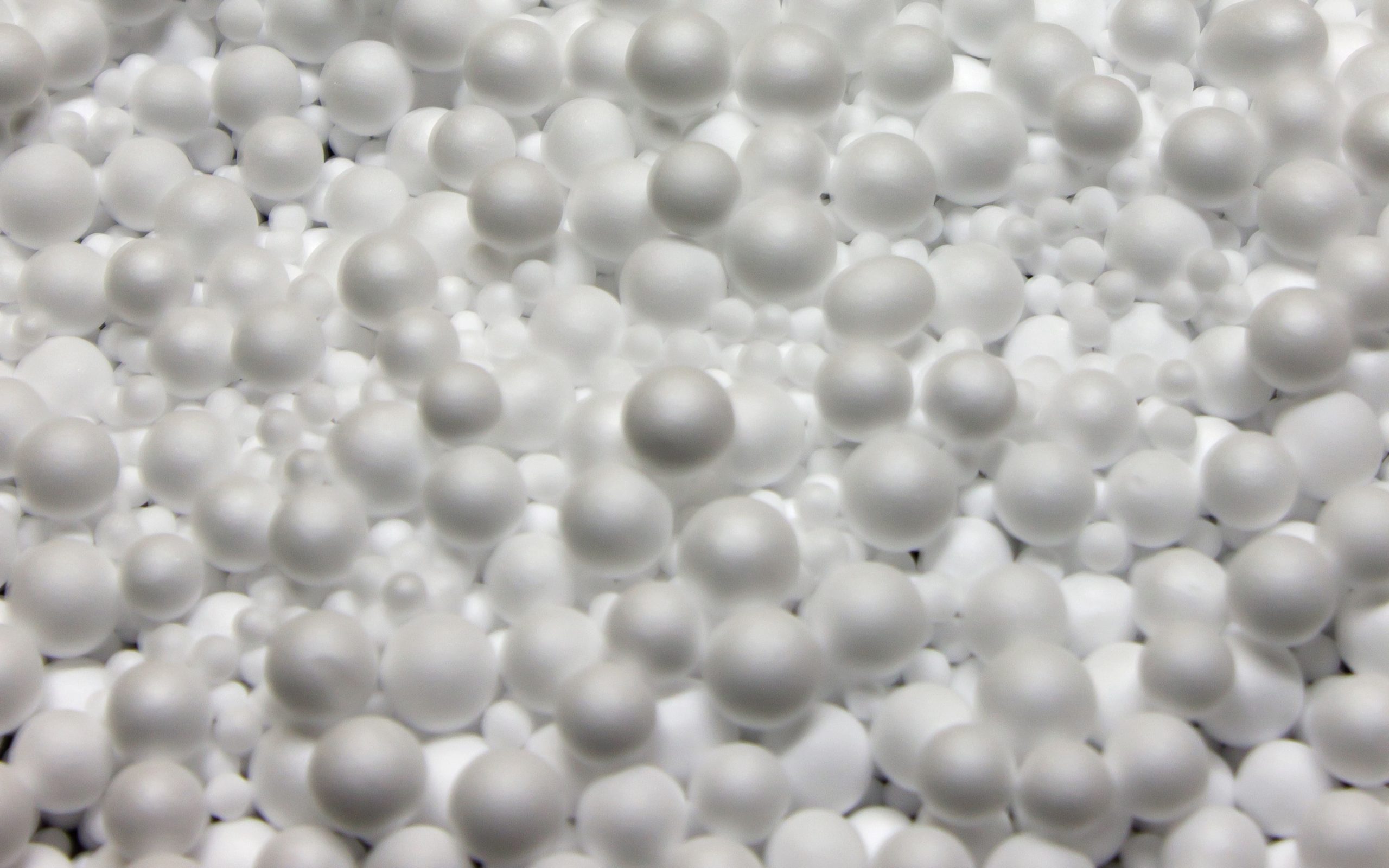
Die Sandstrahltechnik spielt eine wichtige Rolle bei der Oberflächenbehandlung durch Reinigung, Entfernung von Oberflächenverschmutzungen, Verbesserung der Oberflächenrauheit oder Verbesserung der Materialhaftung durch Hochdruckstrahlen. Die Wahl des Strahlmittels wirkt sich jedoch direkt auf die Bearbeitungsergebnisse und die Kosten aus. Unter den gebräuchlichen Strahlmitteln sind ultrafeine Aluminiumoxid-Strahlmittel und Keramikperlen-Strahlmittel weit verbreitet. Obwohl sie sich in einigen Aspekten ähneln, gibt es erhebliche Unterschiede in ihren spezifischen Eigenschaften, Anwendungsbereichen, Vor- und Nachteilen. In diesem Artikel werden die Unterschiede zwischen diesen beiden Arten von Strahlmitteln im Detail untersucht und ihre Haupteigenschaften in einer Vergleichstabelle zusammengefasst, um Ihnen bei der Auswahl des am besten geeigneten Strahlmittels für verschiedene Bearbeitungsanforderungen zu helfen.
Die beiden Medien haben vor allem die folgenden gemeinsamen Merkmale:
- Zweck des Sandstrahlens: Beide werden verwendet, um die Oberfläche von Werkstücken mit sich schnell bewegenden Partikeln zu beaufschlagen, um Oberflächenbehandlungsziele zu erreichen, einschließlich der Entfernung von Oberflächenablagerungen, Rost, Beschichtungen usw.
- Sandstrahleffekt: Beide können die Oberflächenrauhigkeit wirksam verbessern, so dass sie sich besser für eine nachfolgende Beschichtung oder andere Bearbeitung eignen. Darüber hinaus können beide Medien eine leichte Kaltverfestigung der Werkstückoberfläche bewirken, was zur Verbesserung der Verschleißfestigkeit und Dauerfestigkeit des Werkstücks beiträgt.
- Materialeigenschaften: Beide haben eine hohe Härte und können verschiedene Metalle und Keramiken effektiv bearbeiten.
- Umweltfreundlichkeit: Relativ gesehen sind beide Strahlmittel im Vergleich zu einigen herkömmlichen Strahlmitteln (wie z. B. Stahlsand) umweltfreundlicher, da sie weniger Verschleiß verursachen, was zu weniger Staub und Verschmutzung führt.
Im Folgenden werde ich eine Tabelle verwenden, damit Sie die Unterschiede schnell erkennen können. Weitere Informationen finden Sie in der ausführlichen Einführung weiter unten.

Detaillierte Informationen über ultrafeine Aluminiumoxid-Strahlmittel:
Merkmale
- Materialzusammensetzung: Hergestellt aus hochreinem Aluminiumoxid (Al₂O₃) mit einem Reinheitsgrad von in der Regel mehr als 99%. Es hat eine sehr feine Partikelgröße, die typischerweise zwischen 1 und 5 Mikrometern liegt.
- Härte: Tonerde hat eine hohe Härte, die mit einer Mohshärte von 9 nur von Diamant und Siliziumkarbid übertroffen wird.
- Gleichmäßigkeit der Partikel: Ultrafeines Aluminiumoxid hat eine sehr gleichmäßige Partikelverteilung, in der Regel als kleine kristalline Partikel, die polyedrisch, nahezu kugelförmig oder in anderen unregelmäßigen Formen auftreten können.
- Chemische Trägheit: Es ist schwierig, mit vorbehandelten Materialien während der Verarbeitung chemisch zu reagieren, was die Materialeigenschaften nicht beeinträchtigt.
Anwendbare Felder
- Luft- und Raumfahrt: Aufgrund seiner ausgezeichneten Schneidleistung und seiner Partikelgröße im Mikrometerbereich wird es zum Polieren von Präzisionskomponenten wie Triebwerksschaufeln und Raumfahrtkomponenten verwendet, um eine hohe Oberflächengüte zu gewährleisten und die spätere Materialhaftung zu erleichtern.
- Unterhaltungselektronik: Zur Entfernung von Ablagerungen auf elektronischen Produkten und Komponenten, zur Verbesserung der Oberflächenstruktur und zur Erhöhung der Verschleiß- und Korrosionsbeständigkeit.
- Medizinische Geräte: Entfernt effektiv Grate und unregelmäßige Kanten von Oberflächen und sorgt so für glatte und gleichmäßige Instrumente, was für die hohen Präzisions- und Qualitätsanforderungen in der medizinischen Industrie entscheidend ist.
- Kunst und Design: Durch Feinstrahlen können Künstler einzigartige Texturen und Muster auf Materialien wie Metall, Glas und Keramik erzeugen. Diese Technologie wird häufig in der Bildhauerei, bei dekorativen Möbeln und in der Architektur eingesetzt, um Werken eine einzigartige Textur und visuelle Effekte zu verleihen.
Vorteile
- Hohe Reinheit: Es entstehen keine Verunreinigungen oder Kontaminationen während des Gebrauchs, was eine extrem hohe Oberflächenqualität nach der Verarbeitung gewährleistet.
- Gleichförmige und feine Partikel: Kann in kleine Vertiefungen oder komplexe Strukturen von vorbehandelten Objekten eindringen, um eine gleichmäßige Oberflächenbehandlung zu erreichen und konsistente Strahlergebnisse zu gewährleisten.
- Chemische Trägheit: Behält die physikalische und chemische Leistungsstabilität in rauen Umgebungen wie hohen Temperaturen, starken Säuren und starken Laugen bei.
- Hohe Härte und Abriebfestigkeit: Behält seine Form und Leistungsstabilität beim Hochdruckstrahlen bei und hat eine längere Lebensdauer, was den Bedarf an häufigem Austausch reduziert.
Benachteiligungen
- Relativ hoher Preis.
- Erheblicher Verschleiß der Ausrüstung: Erfordert regelmäßige Wartung und Austausch von Teilen der Ausrüstung.
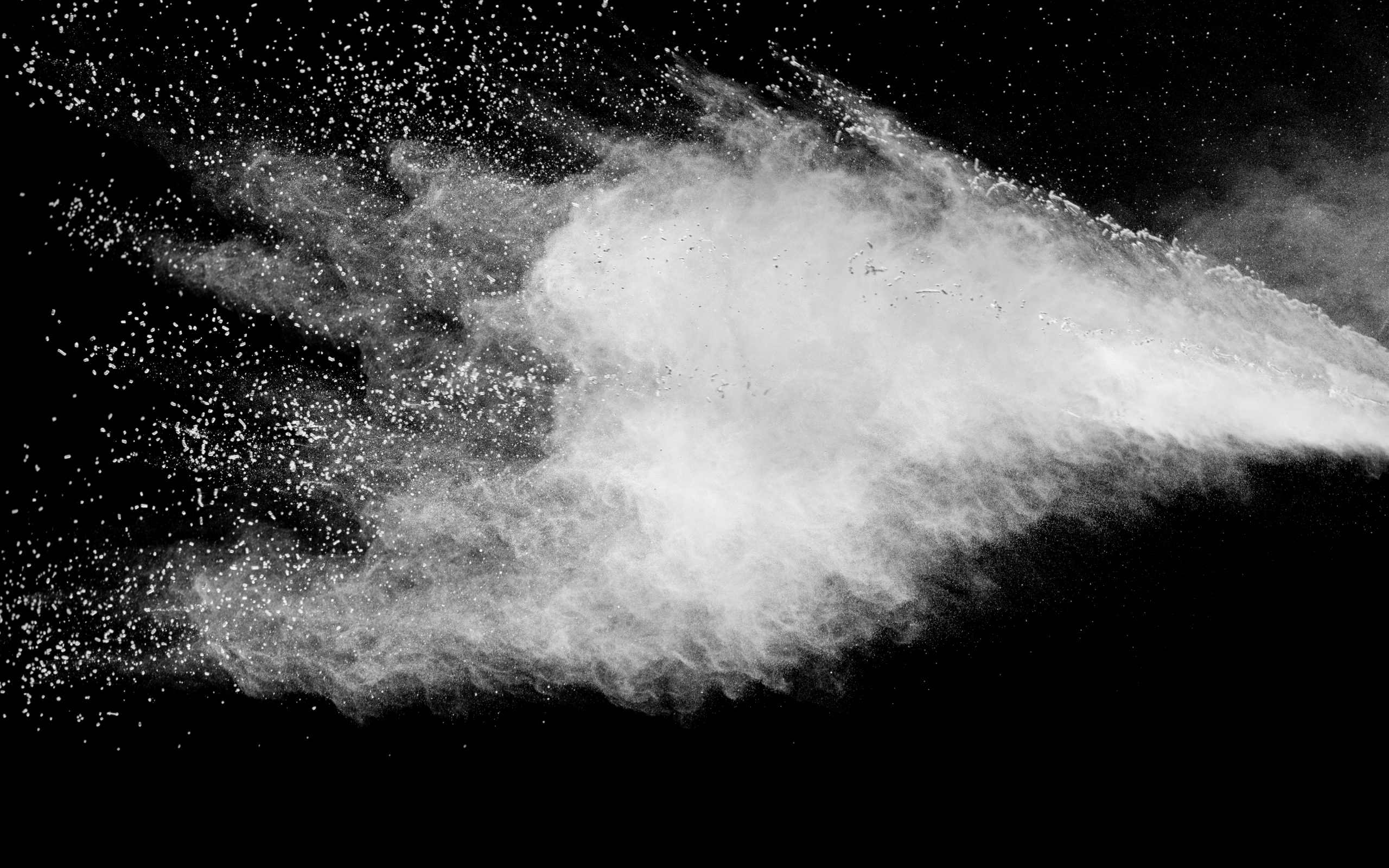
ultrafeine Aluminiumoxid-Strahlmittel
Detaillierte Informationen über keramische Perlen als Strahlmittel:
Merkmale
- Materialzusammensetzung: Hergestellt aus synthetischen keramischen Materialien, in der Regel Zirkoniumdioxid, Bauxit und Siliziumdioxid, und durch Schmelzen bei hohen Temperaturen geformt.
- Härte: Keramische Strahlperlen haben im Allgemeinen eine Mohshärte von 6-8, die etwas niedriger ist als die von Aluminiumoxid.
- Partikelform: Nach dem Abkühlen zu kugelförmigen Partikeln geformt, in der Regel größer, mit Durchmessern von einigen zehn Mikrometern bis zu einigen Millimetern. Die größeren Partikel eignen sich für Aufgaben, die eine höhere Oberflächenrauhigkeit erfordern.
- Dauerhaftigkeit: Keramische Strahlmittel haben eine relativ geringe Hitzebeständigkeit und können bei höheren Temperaturen ihre Leistung beeinträchtigen oder verlieren. Sie sind in verschiedenen chemischen Umgebungen stabil, können aber in stark sauren oder alkalischen Bedingungen beeinträchtigt werden.
Anwendbare Felder
- Automobilherstellung: Zur Beseitigung von Oberflächenfehlern an Gussteilen und zur Verbesserung der Materialhaftung, um die Gleichmäßigkeit und Haltbarkeit der Beschichtung zu gewährleisten.
- Metallverarbeitung: Wird zum Schleifen und Polieren verwendet, um die Glätte und Haptik von Metalloberflächen zu verbessern.
- Möbelherstellung: Bearbeitet Holz- und Metallmöbeloberflächen, um ein gleichmäßiges Schleifbild zu erzielen.
Vorteile
- Relativ geringe Kosten: Geeignet für die Großserienproduktion.
- Einheitliche kugelförmige Teilchen: Größere Größe und kann ein bestimmtes Maß an Oberflächenrauhigkeit, geeignet für spezifische Oberflächenbehandlung Bedürfnisse zu erreichen.
- Geringerer Geräteverschleiß.
Benachteiligungen
- Geringfügig niedrigere Härte: Nicht geeignet für die Bearbeitung von Präzisionsteilen mit sehr hohen Anforderungen.
- Schlechte chemische Beständigkeit: Kann die Verwendung bei hohen Temperaturen, in stark sauren oder alkalischen Umgebungen einschränken.
- Kürzere Nutzungsdauer: Erfordert häufigeren Austausch.
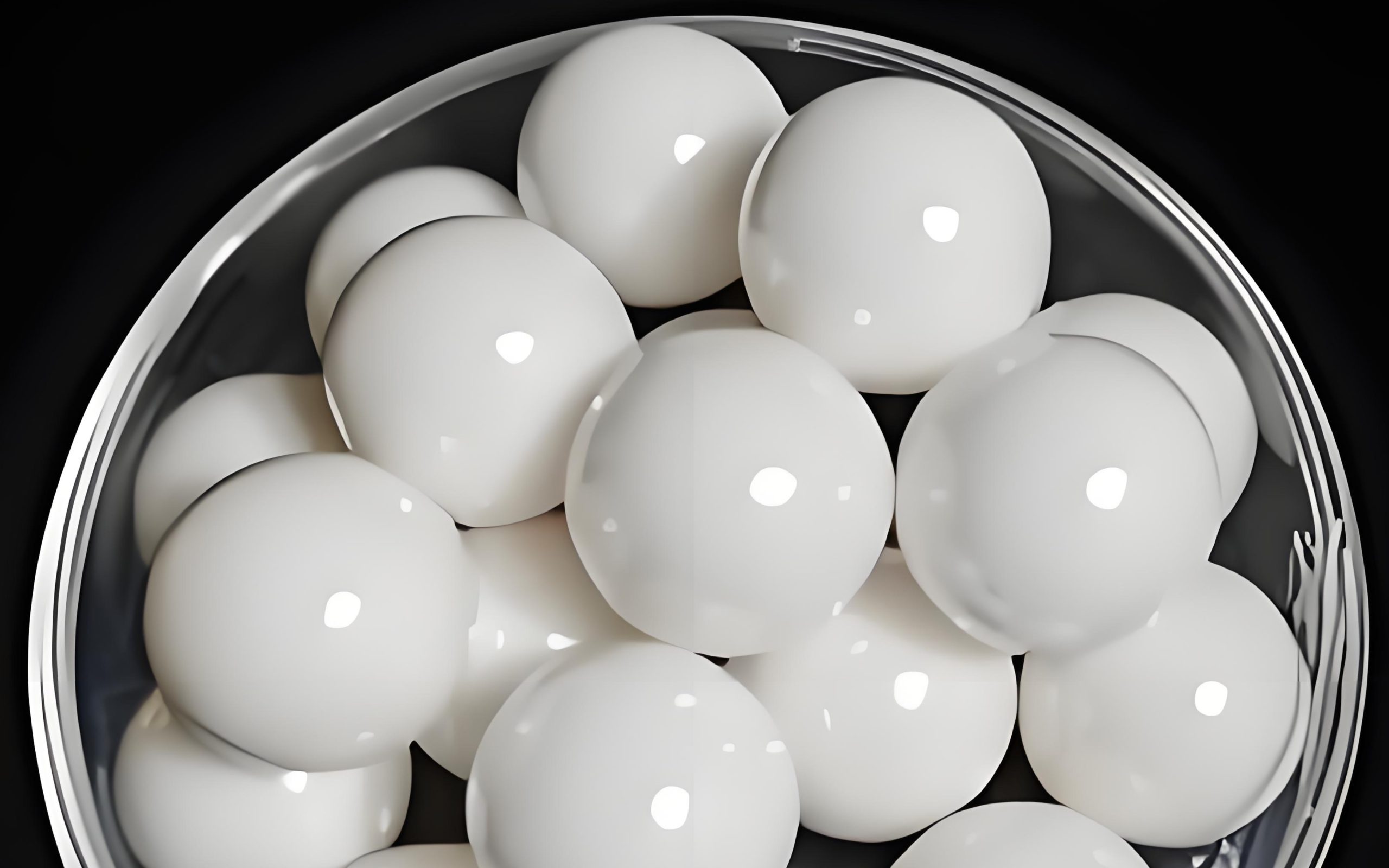
Keramikperlen Strahlmittel
In der Praxis zeichnen sich sowohl die ultrafeinen Aluminiumoxid-Strahlmittel als auch die keramischen Perlen-Strahlmittel in ihren jeweiligen Bereichen aus, weisen jedoch erhebliche Unterschiede in den Verarbeitungseffekten auf:
Ultrafeines Aluminiumoxid-Strahlmittel eignet sich hervorragend für die Bearbeitung hochharter und hochfester Werkstoffe und entfernt effektiv Oberflächenoxide und Grate, insbesondere für die Präzisionsbearbeitung komplex geformter Werkstücke. Aufgrund seiner harten Partikel verursacht es jedoch bei intensivem Dauereinsatz einen erheblichen Verschleiß an den Maschinen, der möglicherweise eine regelmäßige Inspektion und Wartung erfordert.
Keramische Strahlmittel hingegen eignen sich gut für Aufgaben, die eine hohe Oberflächengüte und eine geringe Oberflächenbelastung erfordern, und bieten eine hervorragende Oberflächenglätte, ohne das Werkstück zu beschädigen. Es hat eine lange Lebensdauer und ist wiederverwendbar, was es in Bezug auf Kostenkontrolle und Effizienz kosteneffizienter macht, kann aber bei starkem Abrieb etwas unzureichend sein und unterliegt bestimmten Umweltanforderungen und Einschränkungen.
Daher kann durch die Wahl des geeigneten Strahlmittels auf der Grundlage der spezifischen Anforderungen die Wirkung jedes einzelnen Typs maximiert und die Arbeitseffizienz sowie die Bearbeitungsqualität verbessert werden. Ultrafeines Aluminiumoxid-Strahlmittel eignet sich aufgrund seiner hohen Härte, Verschleißfestigkeit und gleichmäßigen Partikelverteilung besonders für Anwendungen, die hohe Präzision und lange Haltbarkeit erfordernwie die Luft- und Raumfahrt und hochwertige medizinische Geräte. Im Gegensatz dazu eignen sich keramische Strahlmittel aufgrund ihrer Kosteneffizienz, ihrer gleichmäßigen Strahlwirkung und ihres geringeren Geräteverschleißes besser für die Automobilherstellung und die allgemeine Metallverarbeitung. Für Präzisionsbearbeitungen, die eine hohe Oberflächengüte erfordern, sind keramische Strahlperlen besser geeignet.
Zusammenfassend lässt sich sagen, dass neben der Berücksichtigung spezifischer Verarbeitungsanforderungen auch die wirtschaftlichen Vorteile der beiden Medien von Bedeutung sind:
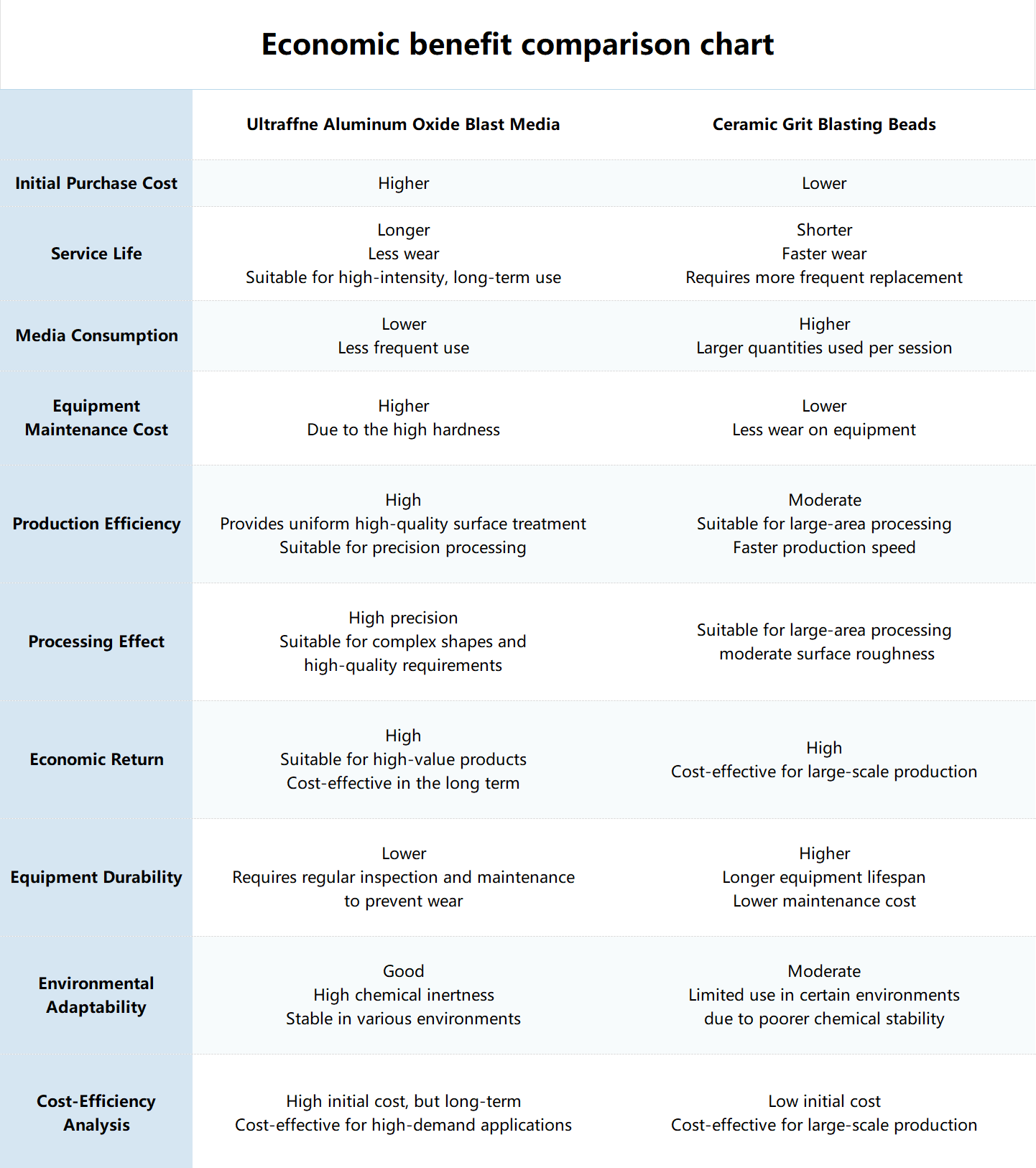
Kosten des Erstkaufs
Ultrafeines Aluminiumoxid-Strahlmittel hat aufgrund seines hohen Reinheitsgrades und seiner feinen Partikel höhere Anschaffungskosten, wobei ein komplexerer Herstellungsprozess zu einem höheren Marktpreis führt. Diese hohe Investition ist geeignet für Anwendungen mit sehr hohen Anforderungen an die Qualität der Oberflächenbehandlungwie Luft- und Raumfahrt, hochwertige medizinische Geräte und Unterhaltungselektronik.
Im Gegensatz dazu sind die Produktionskosten für keramische Strahlmittel aufgrund der relativ billigen Rohstoffe wie Bauxit und Zirkoniumdioxid und der Massenproduktionsverfahren wie dem Hochtemperatursintern niedriger, was zu einem deutlich niedrigeren Preis als bei ultrafeinen Aluminiumoxid-Strahlmitteln führt. Keramikkugeln als Strahlmittel eignen sich für kostensensible Industrien mit großen Produktionsmengen, wie z. B. Automobilbau und Möbelproduktion. Die Senkung der Anschaffungskosten trägt zur Verbesserung der Gesamtgewinnspannen in diesen Bereichen bei.
Nutzungsdauer und Medienkonsum
Ultrafeines Aluminiumoxid-Strahlmittel hat eine extrem hohe Härte und Verschleißfestigkeit, so dass es selbst unter hohem Druck während des Strahlens die Integrität und Stabilität der Partikel beibehält und die Wahrscheinlichkeit einer Fragmentierung und Beschädigung verringert. Dies bedeutet, dass Ultrafeines Aluminiumoxid-Strahlmittel muss seltener ausgetauscht werden und verbraucht weniger Strahlmittelund verlängert so seine Lebensdauer. Obwohl die Anschaffungskosten höher sind, kann die längere Lebensdauer die Kosten pro Nutzung verteilen, was vor allem bei Produktionsaufgaben mit hohem Bedarf und langen Zyklen wichtig ist.
Keramische Strahlperlen sind trotz ihrer geringeren Härte aufgrund ihrer kugelförmigen Struktur wirksam bei der Verringerung des Verschleißes. Ihre Verschleißfestigkeit und Bruchfestigkeit ist jedoch etwas geringer als die von ultrafeinem Aluminiumoxid, insbesondere bei hochintensiven Strahlarbeiten, bei denen Keramikkugeln verschleißen schneller und müssen häufiger ausgetauscht werden. Obwohl die Anschaffungskosten niedriger sind, führt die kürzere Lebensdauer zu einem höheren Gesamtverbrauch an Medien, was bei einer langfristigen Großproduktion zu höheren Ersatzkosten führen kann.
Wartung und Betriebskosten der Ausrüstung
Ultrafeines Aluminiumoxid-Strahlmittel verursacht aufgrund seiner höheren Härte einen erheblichen Verschleiß an der Strahlanlage, insbesondere an Düsen, Pistolen und Rohrleitungen. Die Ausrüstung kann nach längerem Einsatz dieses Strahlmittels spürbar verschleißen, was zu einer verminderten Leistung und einem potenziellen Austausch- und Wartungsbedarf führt. Diese Situation kann zu höheren Wartungskosten und wirtschaftlichen Verlusten aufgrund von Ausfallzeiten führen. Daher müssen Unternehmen, die mit ultrafeinem Aluminiumoxid strahlen, Folgendes beachten die Häufigkeit und die Kosten der Wartung der Ausrüstung berücksichtigen und ob sie über ein ausreichendes Budget und genügend Zeit für die regelmäßige Instandhaltung verfügen.
Im Gegensatz dazu verursachen keramische Strahlperlen mit ihrer geringeren Härte einen relativ geringeren Verschleiß der Anlagen. Obwohl die Bearbeitungseffekte von Keramikkugeln bei Hochpräzisionsanwendungen nicht mit ultrafeinem Aluminiumoxid mithalten können, führt ihr geringerer Verschleiß zu niedrigeren Wartungskosten und einer längeren Lebensdauer der Anlagen. Dies macht Keramikkugeln in der Großserienfertigung mit geringer Präzision wirtschaftlich vorteilhaft, da die Verringerung von Ausfall- und Wartungszeiten zur Verbesserung der Gesamteffizienz der Produktion beiträgt.
Effizienz und Kosten-Nutzen-Verhältnis
In Bezug auf die Produktionseffizienz sorgen die hohe Härte und die feinen Partikel des ultrafeinen Aluminiumoxidstrahls für eine äußerst gleichmäßige Oberflächenbehandlung, die insbesondere die Produktpräzision und Oberflächenqualität bei der Bearbeitung komplexer Formen oder kleiner Komponenten verbessert. Diese hohe Leistung bedeutet oft, dass mehr hochwertige Produkte pro Zeiteinheit fertiggestellt werden können, was die Nacharbeit und die Fehlerquote verringert und somit die Gesamteffizienz der Produktionslinie erhöht. In einigen Bereichen der Herstellung von Produkten mit hohem Mehrwert kann der Einsatz von ultrafeinem Aluminiumoxid-Strahlen höhere wirtschaftliche Erträge bringen.
Keramische Strahlmittel mit größerer Partikelgröße und relativ geringerer Härte sind bei einigen Anwendungen weniger fein, sorgen aber für eine hohe Produktionseffizienz bei Aufgaben, die größere Oberflächen oder eine höhere Oberflächenglätte erfordern. Vor allem in der Großserienproduktion sind keramische Strahlmittel aufgrund ihrer Kostenvorteile und der höheren Produktionsgeschwindigkeit eine wirtschaftliche Wahl. Für Unternehmen, die weniger hohe Anforderungen an die Oberflächenbehandlung stellen und bei denen die Kostenkontrolle im Vordergrund steht, bieten keramische Strahlmittel ein ausgewogenes Verhältnis zwischen Qualität und Kosten.
Langfristige Analyse des wirtschaftlichen Nutzens
Unter dem Gesichtspunkt des langfristigen wirtschaftlichen Nutzens hängt die Entscheidung zwischen ultrafeinem Aluminiumoxid-Strahlmittel und Keramikperlen-Strahlmittel von den spezifischen Produktionsaufgaben, der Lebensdauer der Anlagen und dem gesamten Produktionszyklus ab. Während das Strahlen mit ultrafeinem Aluminiumoxid eine höhere Anfangsinvestition erfordert, eignet es sich aufgrund seiner langen Lebensdauer und seiner hervorragenden Bearbeitungsergebnisse für hochwertige Produkte und bietet langfristige wirtschaftliche Vorteile bei gleichzeitiger Gewährleistung der Qualität. Keramische Strahlmittel eignen sich aufgrund ihrer niedrigen Kosten und hohen Effizienz für große, kostengünstige Produktionsumgebungen und verbessern den Gesamtgewinn durch Senkung der täglichen Betriebskosten.
Im Zuge des technologischen Fortschritts werden auch weiterhin neue Strahlmittel und verbesserte Strahltechniken entwickelt, die die Oberflächenbehandlung in Zukunft effizienter und präziser machen. Durch diese ausführliche Einführung haben Sie die Eigenschaften und Anwendungsbereiche dieser beiden Strahlmittel kennengelernt, was Ihnen helfen wird, eine bessere Wahl für praktische Anwendungen zu treffen. Achten Sie außerdem darauf, dass Sie das am besten geeignete Strahlmittel auf der Grundlage der spezifischen Produktionsanforderungen, des Budgets und der Produktpositionierung Ihres Unternehmens auswählen. Eine sorgfältige Abwägung hilft Ihnen, die Kosteneffizienz auf dem wettbewerbsorientierten Markt zu optimieren.
Filter











